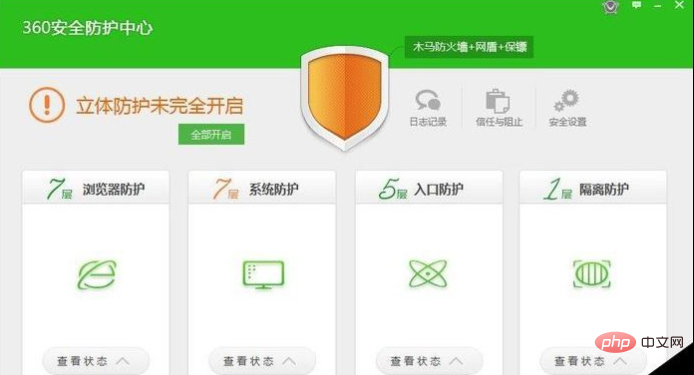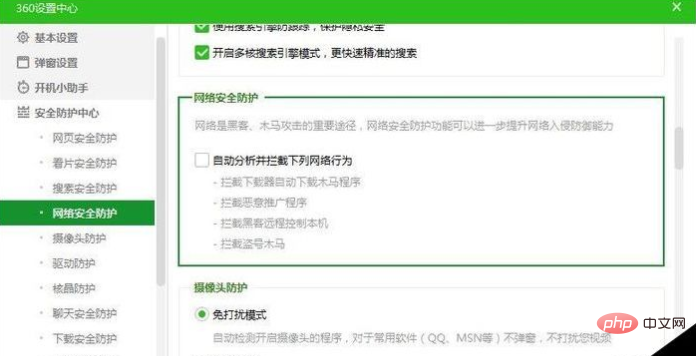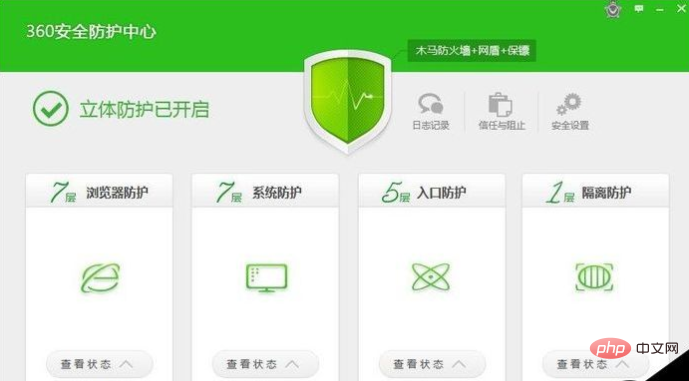Home >Common Problem >How to turn on network security protection
How to turn on network security protection
- 藏色散人Original
- 2019-05-31 10:31:558549browse
When some users open the 360 Security Guard experience, they will prompt us that network security protection has not been turned on, which is risky. So how do you turn on network security protection? Then follow the editor to see how to turn on network security protection!

Specific steps to turn on network security protection:
1. We first automatically checked and found that network security was not turned on. Protection, there are risks.

#2. When we click to enter, we can see the types of risks that exist. We can directly click "Open" to repair.

#3. We can also click "Security Protection Center" to enter all protection settings and enable all security protections with one click.

4. You can also click "Security Settings" in the upper right corner of the interface to check whether the security protection is turned on one by one.

5. Finally return to the interface. If you find that "three-dimensional protection is turned on", it means that all protections have been turned on successfully. If a dialog box keeps popping up, you cannot If it is turned on, it means there is a problem with 360. You can uninstall and then reinstall. If it still cannot be solved, you need to check for viruses or even reinstall the system.

#The method of turning on network security protection is introduced in detail here; turning on network security protection can safely protect our computers. If it hasn't been turned on yet, turn it on. If you don't know how to turn it on, there are also methods mentioned above that you can refer to to turn it on.
The above is the detailed content of How to turn on network security protection. For more information, please follow other related articles on the PHP Chinese website!

